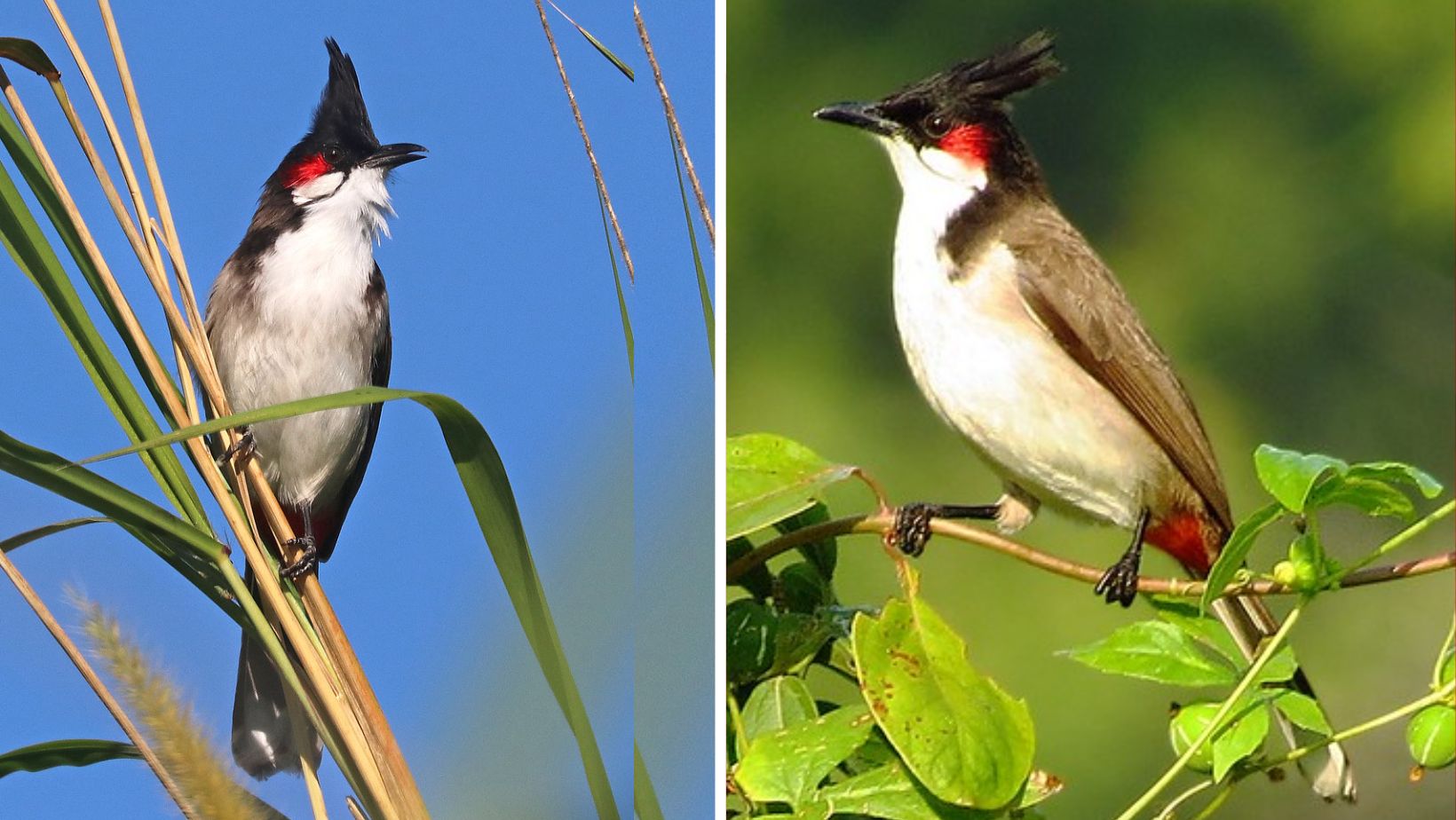
A medium-sized songbird who wears his highly luminous mustache with elevated pride.
Meet the Red-whiskered Bulbul
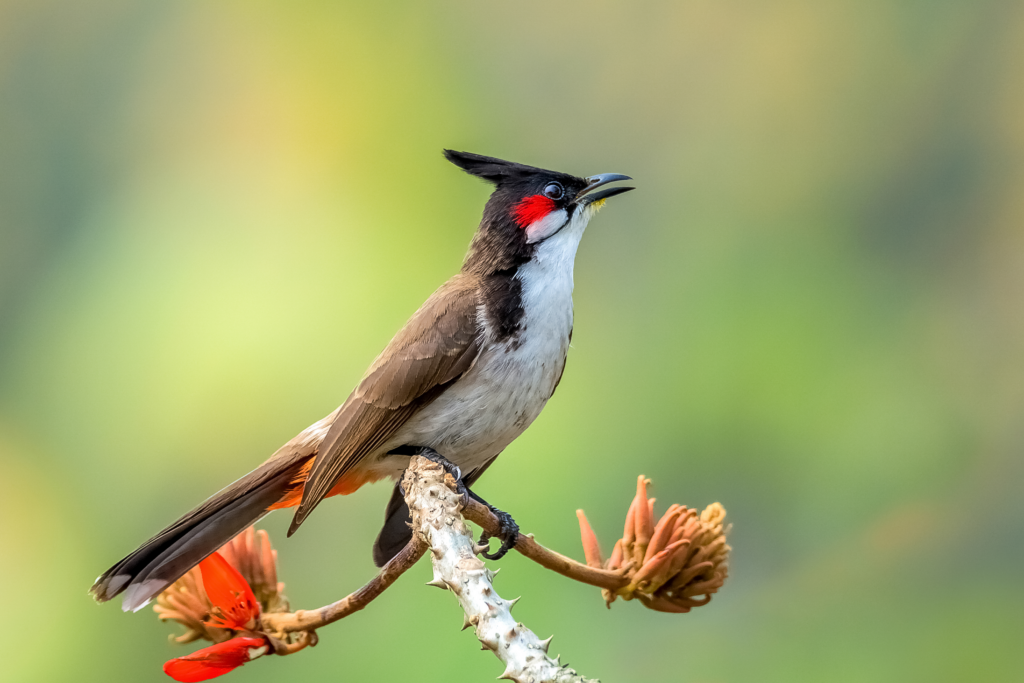 “Red-whiskered bulbul (সিপাহি বুলবুলি)” by Nafis Ameen is licensed under CC BY-SA 4.0.
“Red-whiskered bulbul (সিপাহি বুলবুলি)” by Nafis Ameen is licensed under CC BY-SA 4.0.
The red-whiskered bulbul (Pycnonotus jocosus), both male and female, has a small red patch extending back from the eye. The rest of its cheeks are white, while the head is black, with a crest extending upwards from the back. Its wings and back are brownish, and the undersides are buff. Additionally, there is a splash of red feathers in the vent area. They have short, black-colored legs and toes, and their eyes are dark brown.
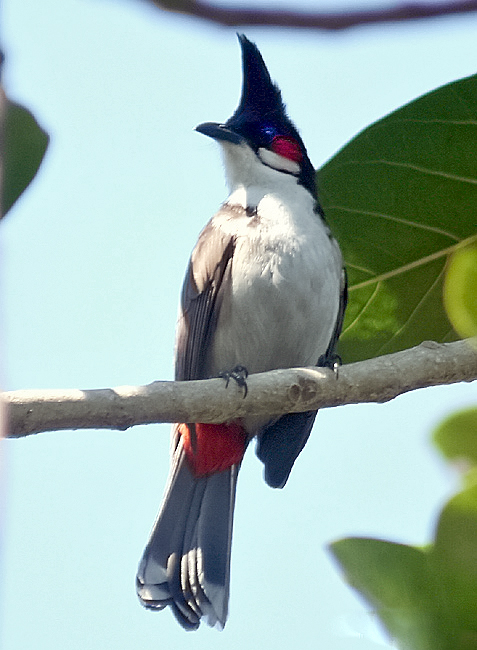
On average, they measure about 20cm (8 inches) in length.
Juveniles lack the red patch behind the eye, and the vent area is rufous-orange.
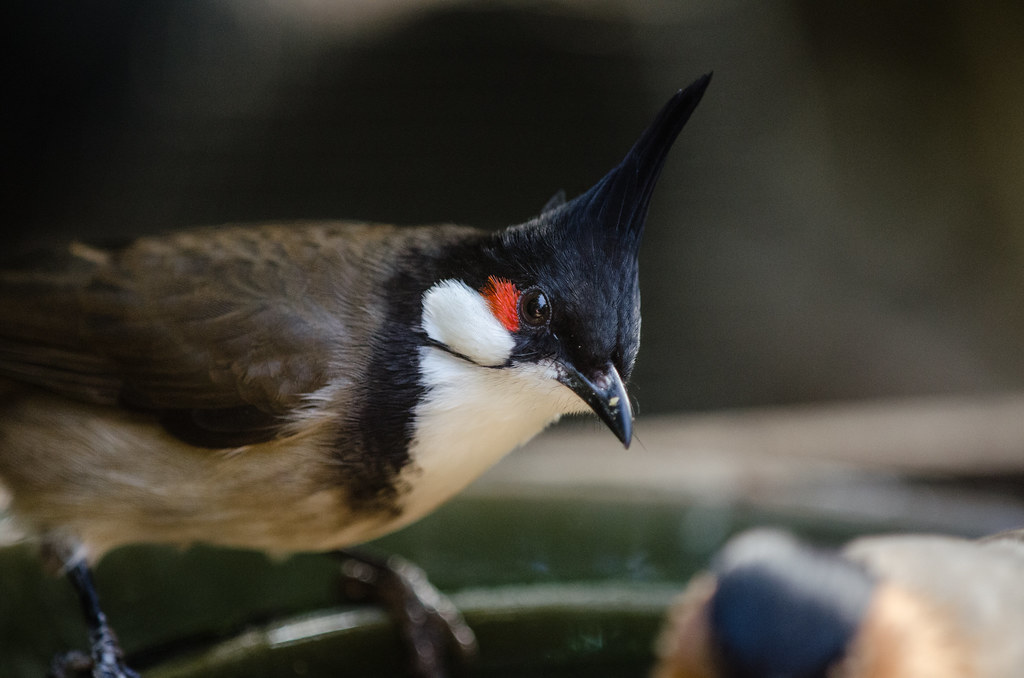 “Red whiskered bulbul” by Mathias Appel is marked with CC0 1.0.
“Red whiskered bulbul” by Mathias Appel is marked with CC0 1.0.
The native habitat of red-whiskered bulbuls includes countries in Asia such as Bangladesh, Bhutan, Cambodia, China, India, Lao People’s Democratic Republic, Malaysia, Myanmar, Nepal, Thailand, and Viet Nam. They have been introduced to other regions like Australia, Mauritius, Réunion, Saudi Arabia, Seychelles, Singapore, the United Arab Emirates, and certain areas in the United States, including Florida and Oahu, Hawaii. Originally native to Asia, these birds have spread across the globe, including Australia, the United States, and other parts of Asia, due to releases from the pet trade. Unfortunately, their populations are now threatened by collection for the pet trade.
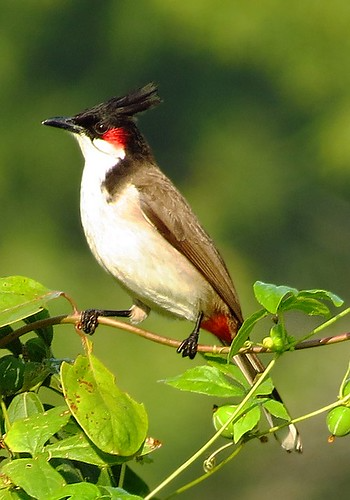 “Red-whiskered bulbul” by Soumyadeep Chatterjee . is licensed under CC BY-SA 2.0.
“Red-whiskered bulbul” by Soumyadeep Chatterjee . is licensed under CC BY-SA 2.0.
Red-whiskered bulbuls inhabit forests, shrublands, wetlands, and suburban areas, including backyards. They are generally resident birds and do not migrate frequently.
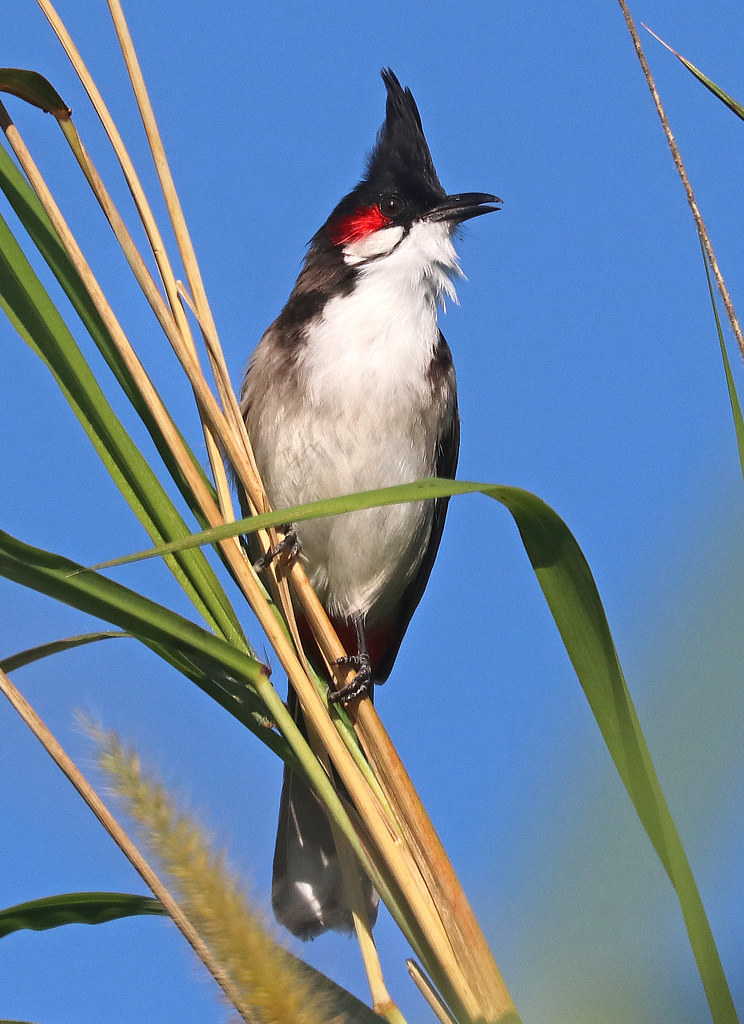 “706 – RED-WHISKERED BULBUL (1-7-2020) pineland park, south miami, miami-dade co, fl -07” by Sloalan is marked with CC0 1.0.
“706 – RED-WHISKERED BULBUL (1-7-2020) pineland park, south miami, miami-dade co, fl -07” by Sloalan is marked with CC0 1.0.
The red-whiskered bulbul, named for the red feathers behind its eyes, is an omnivorous bird that feeds on a variety of fruits, insects, berries, and seedlings. As omnivores, red-whiskered bulbuls primarily feed on berries, seedlings, and fruits. Juveniles also consume insects like caterpillars. Due to their small beak size, they are limited in the size of food they can eat. They forage in trees for the most part, but they can also catch insects while flying.
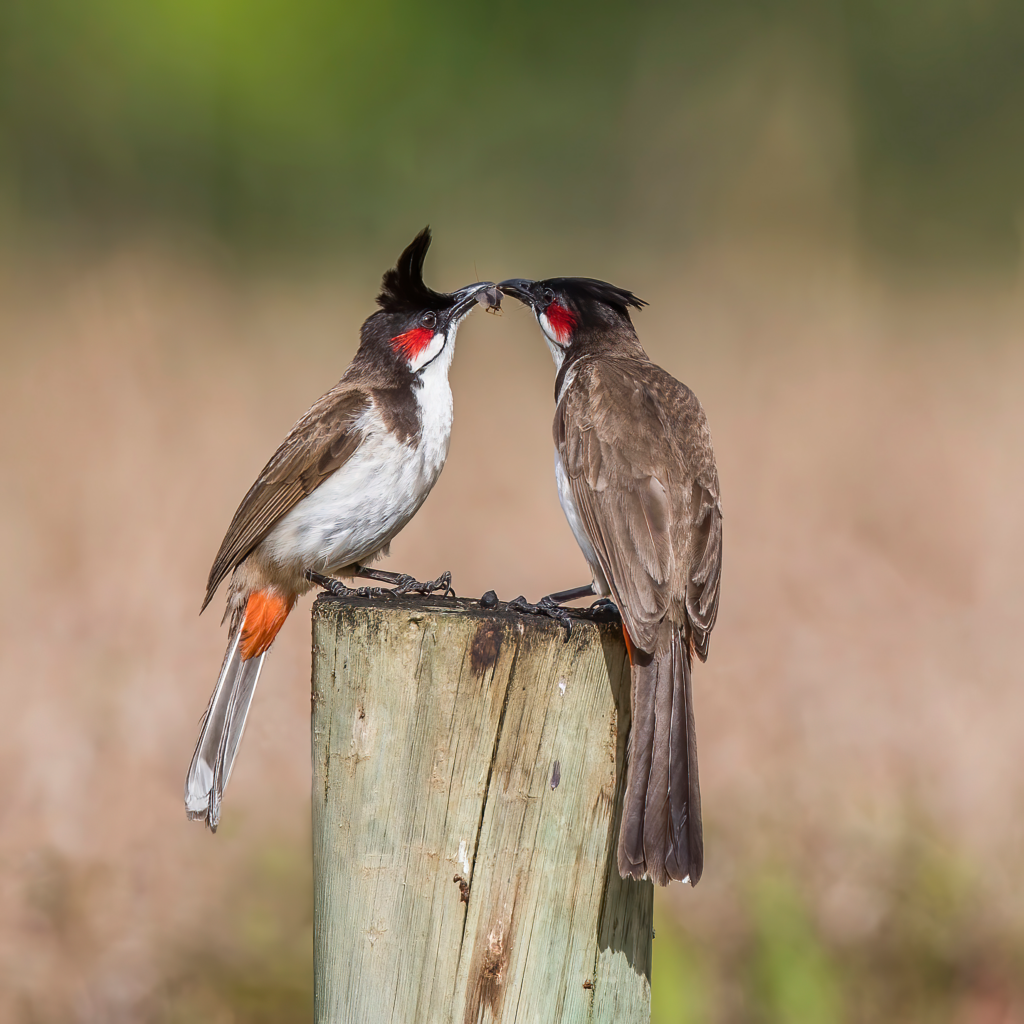 “Red-whiskered bulbuls (Pycnonotus jocosus) Mauritius” by Charles J. Sharp is licensed under CC BY-SA 4.0.
“Red-whiskered bulbuls (Pycnonotus jocosus) Mauritius” by Charles J. Sharp is licensed under CC BY-SA 4.0.
Breeding occurs between January and August in their range. During courtship, they display fluttering wings and bow to potential partners. They also raise and lower their crests repeatedly. The cup-shaped nest is made of vegetation and placed in the fork of a branch. Two to five pinkish eggs with reddish-brown or purple spots are laid in the nest. Nestlings fledge at fourteen to eighteen days and may be fed by the parents for a few more days. Pairs may raise two to three broods in a season.
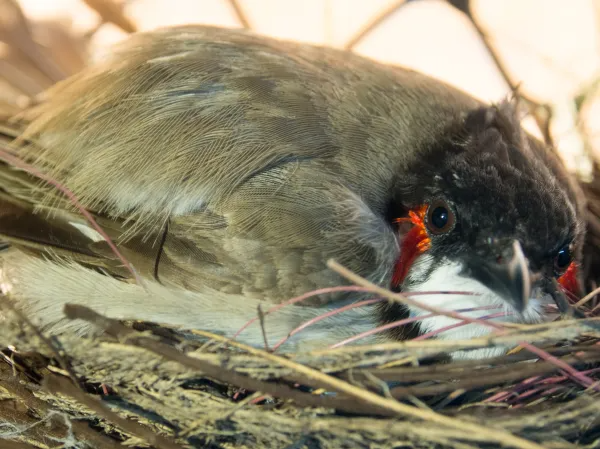 “Red-Whiskered Bulbul in its nest” by Pradeep717 is licensed under CC BY-SA 4.0.
“Red-Whiskered Bulbul in its nest” by Pradeep717 is licensed under CC BY-SA 4.0.
Red-whiskered bulbuls spend a lot of time perched and singing, especially at the beginning of the breeding season. They are loud birds with a range of warbling songs. They forage for food mainly in trees. They form flocks for feeding throughout most of the year but separate into pairs during the breeding season to establish nests. These pairs generally consist of 3 to 5 members, but larger groups of up to 50 birds have been observed.
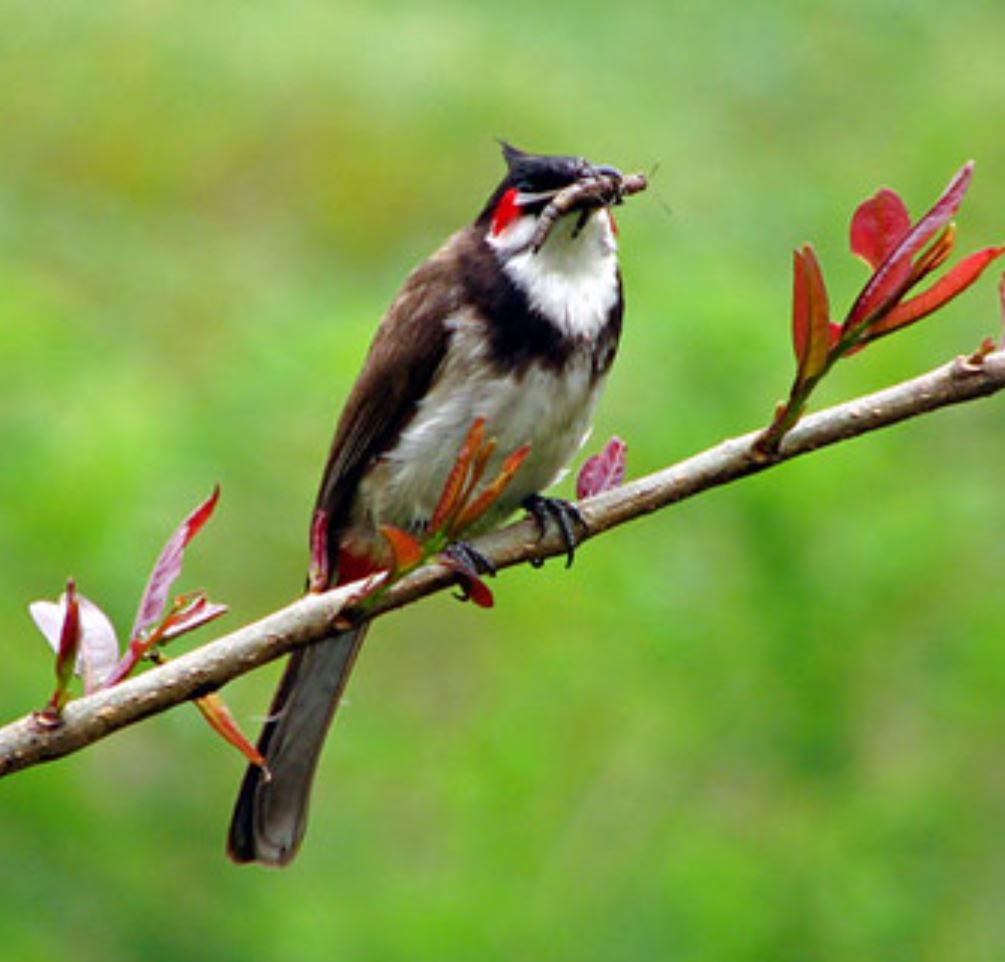 “Pycnonotus jocosus (Red-whiskered Bulbul).” (cropped) by Felix Francis is licensed under CC BY 2.0.
“Pycnonotus jocosus (Red-whiskered Bulbul).” (cropped) by Felix Francis is licensed under CC BY 2.0.
These birds are popular aviary pets, leading to their introduction in various countries, including Australia. Releases and hunting have impacted their populations, although a comprehensive population estimate has not been established.
 “Red-whiskered Bulbul (Pycnonotus jocosus)” by Lip Kee is licensed under CC BY-SA 2.0.
“Red-whiskered Bulbul (Pycnonotus jocosus)” by Lip Kee is licensed under CC BY-SA 2.0.
Listen to this bird right here:
This article uses material from Wikipedia.org which is licensed under the GNU Free Documentation License via Copyright Wikipedia. Images on this page are the sole property of the photographers (unless marked as Public Domain). Please read the license and or contact the photographers directly before using them for any purpose. Thank you all.
A Buff-orange Belly Coupled With Metallic Blue And A Bandit-like Mask To Create A Bird Many Consider To Be Sacred!
Please SHARE this article with all your bird-loving friends and family.

